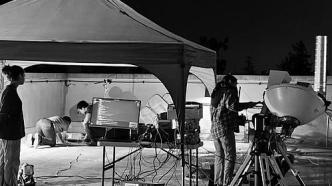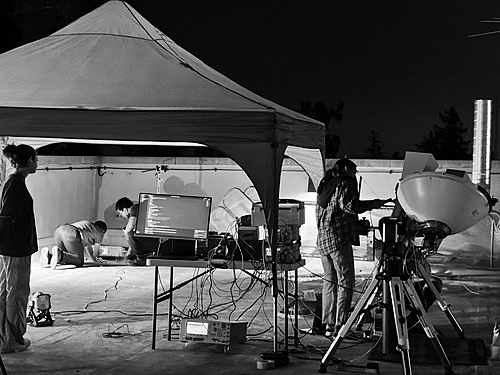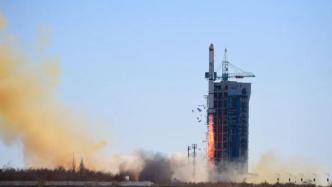

Caltech researchers have detected tiny beams of microwaves coming from space. Image credit: ALI HAJIMIRI
Researchers have taken a small but necessary step toward realizing a long-held dream: collecting solar energy in space and beaming it back to Earth. On June 1, the California Institute of Technology, the creator of the experiment, announced that a satellite launched in January had directed the energy of microwave beams to targets in space, and even sent some of the energy to detectors on Earth. "No one has done this before," said Sanjay Vijendran, a space scientist at the European Space Agency (ESA). "By demonstrating this capability, they have added confidence to the realization of this dream."
Reliability has long been a challenge for space solar power generation. To generate as much electricity as a typical coal-fired or nuclear power plant, satellites need to cover a collection area many kilometers in diameter, requiring hundreds of launches and on-orbit assembly. NASA planned a mission during the energy crisis of the 1970s, but with the technology at the time, the mission, launched by a space shuttle carrying a satellite and assembled by astronauts, would have cost $1 trillion. Since then, few mentions have been made.
Today, space has changed. Solar cells and microwave beams are cheaper and more efficient. Assembling robots will soon be in orbit, and companies like SpaceX have slashed launch costs. Recent research commissioned by the ESA and the UK government shows that large orbital generators could soon generate electricity at a cost comparable to ground-based nuclear power plants.
The Caltech mission aims to take the development of light, cheap and flexible components one step further. The microwave launcher is an array of 32 planar antennas arranged on a surface slightly larger than a dinner plate. By varying the timing of the signals sent to different antennas, the researchers can steer the array's beams. They aimed it at a pair of microwave receivers, then switched the beam from one receiver to the other at will, lighting up LEDs on each receiver.
The microwave transmitter emits a small power of only 200 milliwatts, which is dimmer than the light of a mobile phone camera. But the team was still able to direct a microwave beam toward Earth and detect it with a receiver. "It's a proof of concept," said Ali Hajimiri, an electrical engineer at Caltech. "It shows what the whole system can do."
The Caltech spacecraft also has two planned experiments. One of them is testing 32 different solar cells to see which one can withstand the harsh environment of space. The second is a folded piece of ultralight composite material that will unfold into a two-meter-wide sail-like structure. While there won't be any solar cells on the sail, it's designed to test the thin, flexible, large-scale rigs needed for future power stations.
There seems to be growing interest in space solar power. ESA commissioned two studies this year on the potential structure of an orbital power station. Energy supply companies have joined the effort, Vijendran said. A team at Japan's Kyoto University announced last month that they will work with the Japan Aerospace Exploration Agency to test power transmission in orbit.
Naoki Shinohara, a Japanese electrical engineer, said he was happy to hear about Caltech's success, "but at the same time I'm disappointed because the Japanese aim to conduct the world's first (wireless power transmission) satellite experiment in 2025." ".
Startup Virtus Solis Technologies has also been testing power transmission and plans to put a pilot plant into orbit in 2026. The company's chief executive, John Bucknell, said it intends to provide commercial power to customers within 10 years. "Space solar energy utilization technology is the only clean, reliable and scalable energy technology, and is a reliable path to achieve zero carbon emissions."
(Original title "Satellite successfully transmits solar energy to the earth for the first time to prove the credibility of space-based energy")

